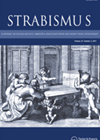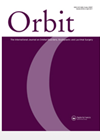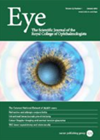You searched for "pupil"
Children and Young People’s Commissioner commends Sight Scotland for leading the way in inclusive education
5 February 2024
|
Sight Scotland, Royal Blind School, Edinburgh, Scotland, visual impairment, children, young people, charity
Nicola Killean, Children and Young People’s Commissioner Scotland, has praised Sight Scotland for not only upholding the rights of visually impaired children and young people, but also empowering them to know their own rights so they can shape their own educational journey.
Optical coherence tomography – reinventing the eye examination
It has been 25 years since Huang et al. presented the first optical coherence tomography (OCT) images in Science [1]. With vast improvements in OCT technology over the years, it is now possible to acquire high-resolution cross-sectional images of the...Fight for Sight to maximise impact by funding solutions-focused research in priority eye conditions
1 August 2018
| Rod McNeil
|
EYE - General
Fight for Sight aims to stop sight loss by funding pioneering research. Rod McNeil takes a look at the Primer Fellowship Awards programme, which provides funding for up to £60,000 for individuals to undertake vision-related research for one year. Among...
Changes in axial length and refraction in young Chinese school children
The authors aimed to assess refractive error and axial length in children aged seven to eight years (grades 1-2) starting education in South China. The study reviewed 301 students and obtained data for analysis from 291 (50.2% female). Average axial...Unravelling ocular motility
1 April 2016
| Damien CM Yeo
|
EYE - Neuro-ophthalmology
Ocular motility can often be a slightly abstract concept during the earlier years of ophthalmology training. A large variance on what embodies normality; mythical concepts like fusion and binocular vision, examination techniques that can be fiddly, and complex neuroanatomy all...
The results of the last survey Jun 2020
Firstly, my sincere thanks to those of you who responded to last edition’s survey. We had a record response. Laser was never my most exciting clinical treatment, but in this environment how I wish for even that degree of patient...Third nerve palsy following cataract surgery with sub-Tenon’s anaesthesia
Figure 1: Photograph showing partial ptosis of the right eye two months after surgery (photo by R McLeod). An 83-year-old lady had routine right eye cataract surgery under uncomplicated sub-Tenon’s anaesthesia. She presented two weeks later, explaining that following the...Myasthenia Gravis Masquerading as a Third Cranial Nerve Palsy
1 February 2014
| Maria Loredana Popescu, Annabel Doyle
A 65-year-old man presented with a week’s history of binocular diplopia (in all directions of gaze) and a right partial ptosis. He was systemically well. His past medical history was unremarkable except for vitiligo. At presentation acuity was 6/6 bilaterally....
Student Ophthalmology Review Day: SORD
16 November 2023
by Josephine A Bates, FY2 Doctor, North Devon District Hospital, Barnstaple, UK. Opening its doors to medical students across the country once again, the Royal College of Ophthalmologists hosted the Student Ophthalmology Review Day (SORD) with a fantastic turnout. Dr...
Ophthalmology assessment using Revised Bloom’s Taxonomy
1 December 2020
| Rasan Burhan
|
EYE - General
Bloom’s Taxonomy is a hierarchical list of attributes and skills that facilitates teachers to effectively teach, whilst concurrently enabling learners to effectively learn. It was first developed in 1956 by Benjamin Bloom, an educational psychologist along with a team of...
Efficacy of browpexy with blepharoplasty
1 October 2017
| Jaya Myneni
|
EYE - Pathology, EYE - Oncology
|
Blepharoplasty, brow lift, brow ptosis, browpexy
This is a retrospective case series evaluating the efficacy of and comparing the surgical results between internal (IB) and external browpexy (EB) surgery in lifting central and lateral brow. Patients who underwent blepharoplasty without brow lift were used as a...






